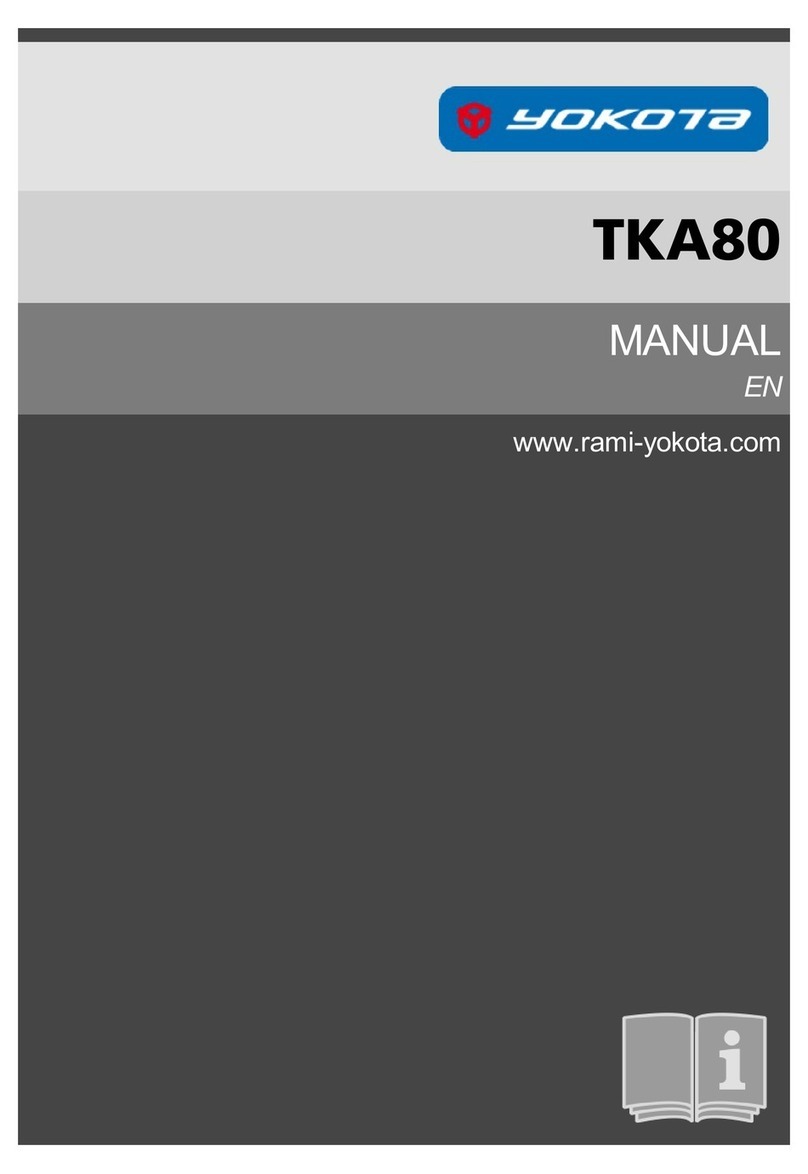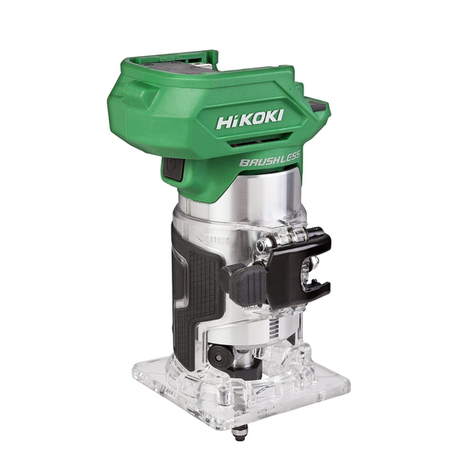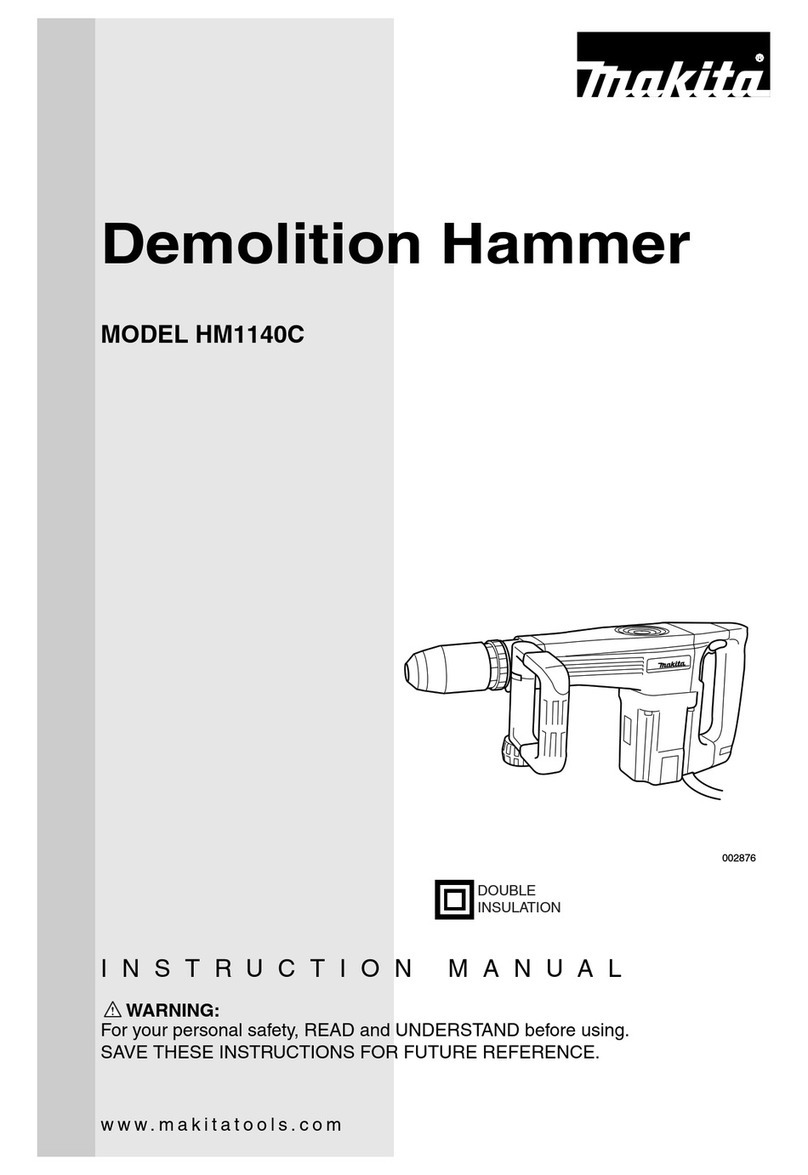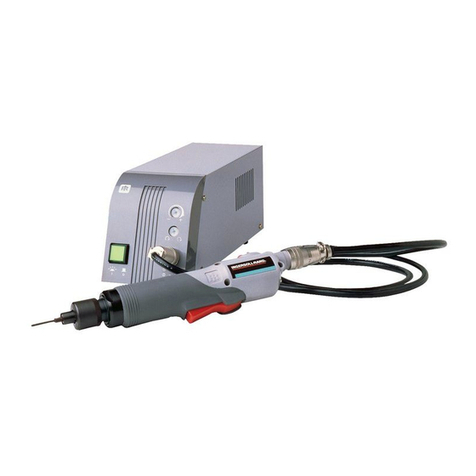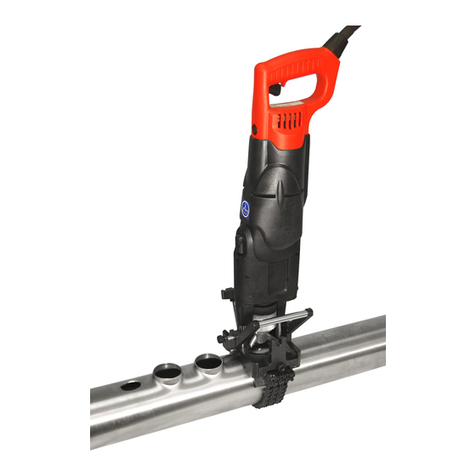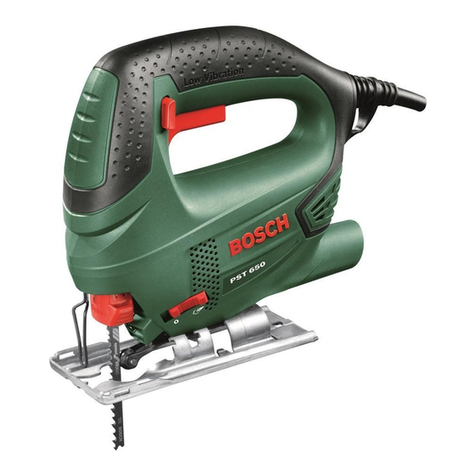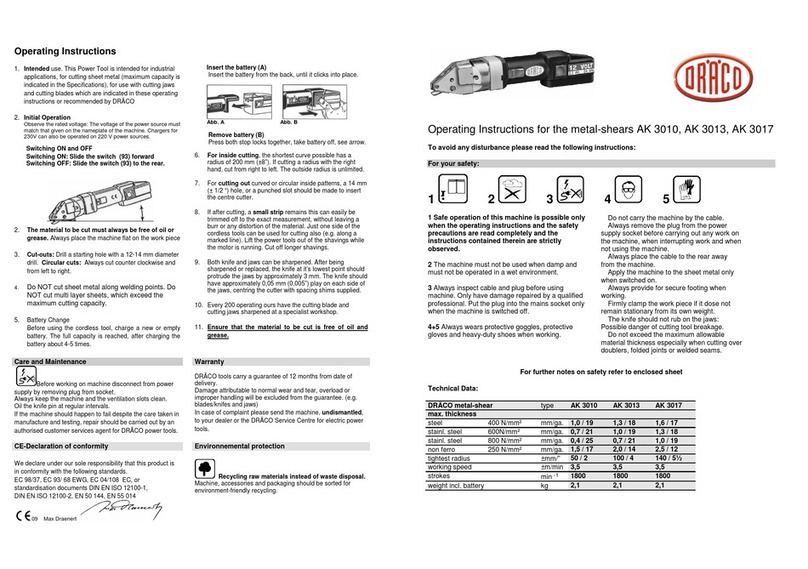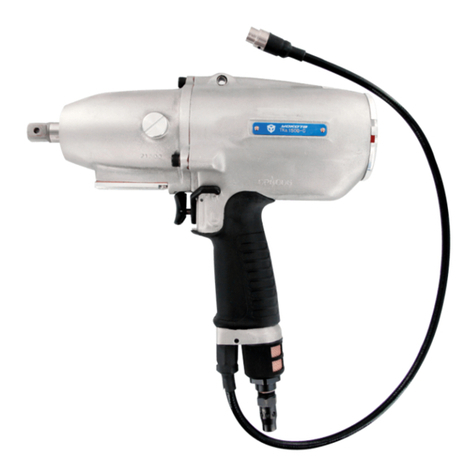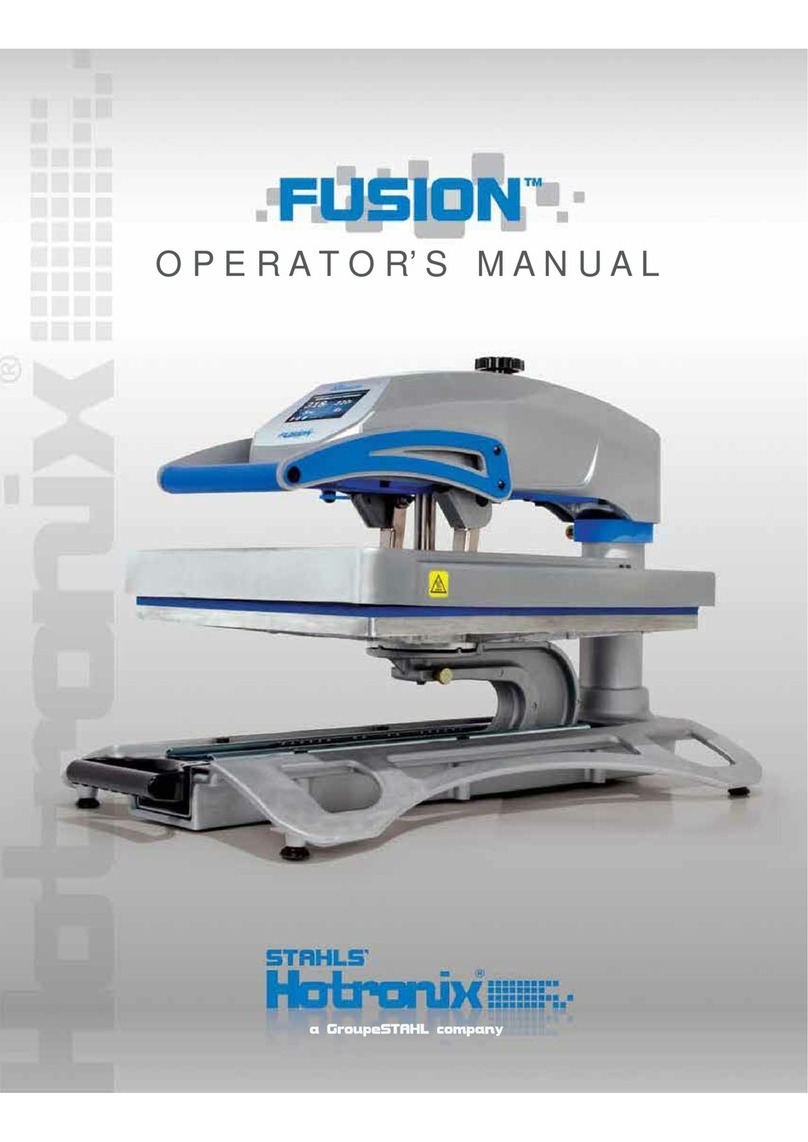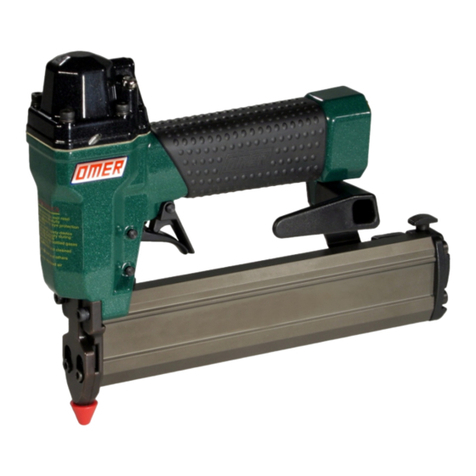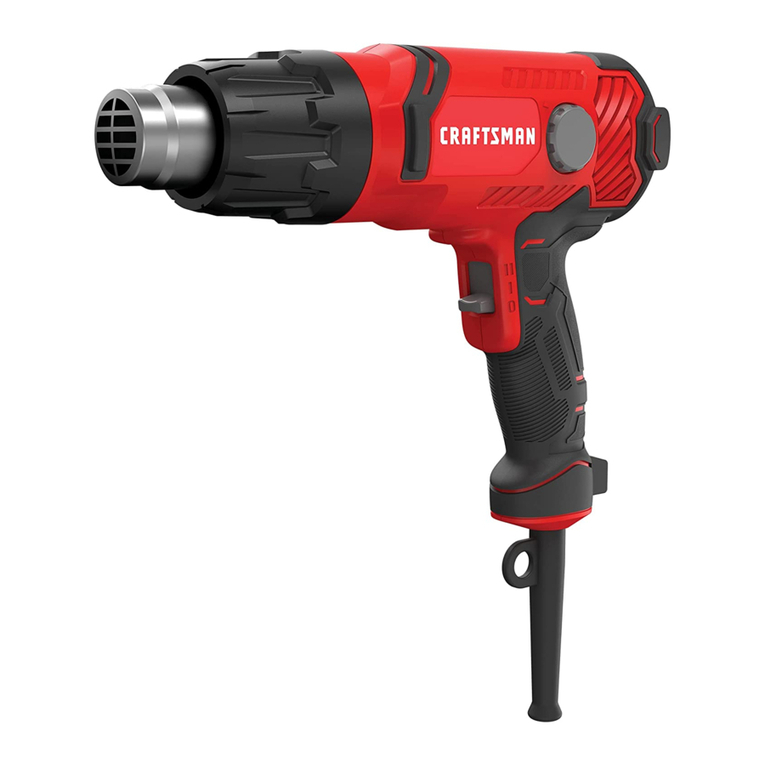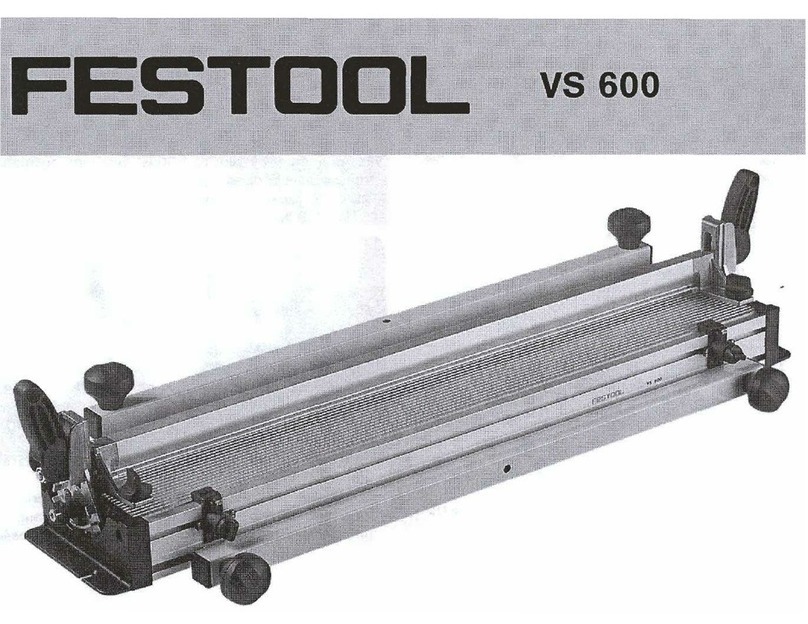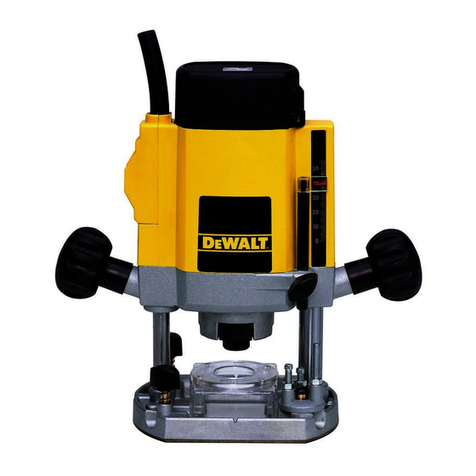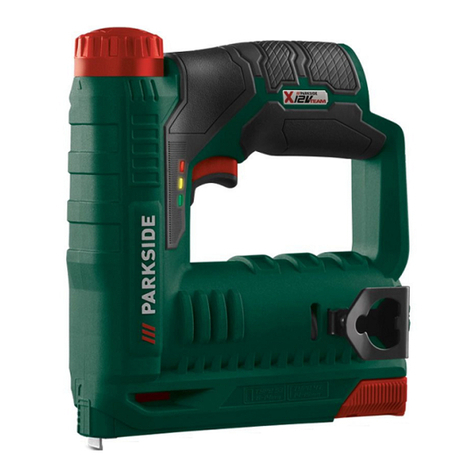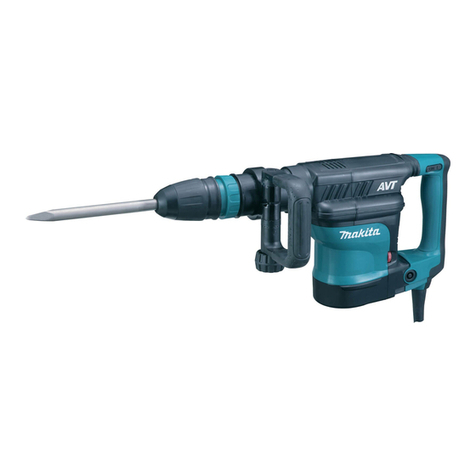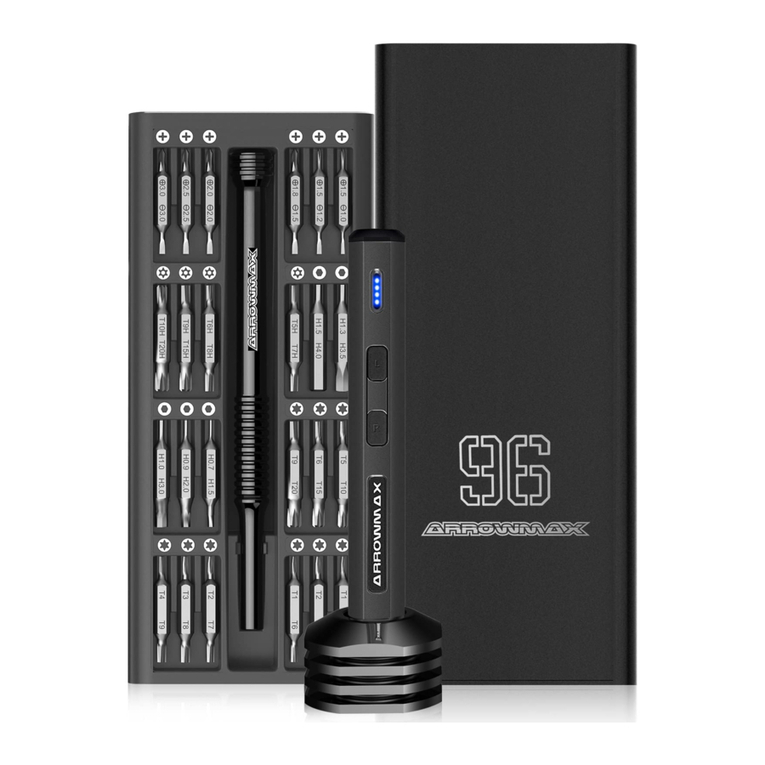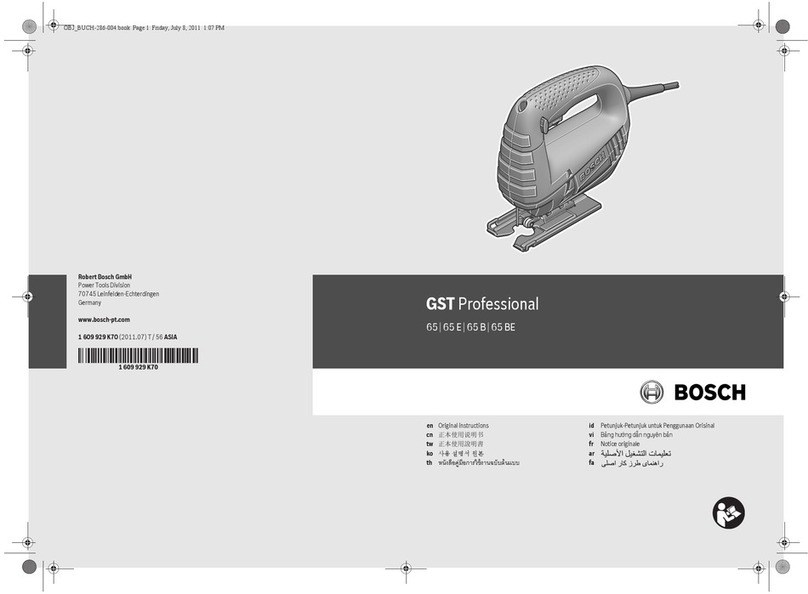CRYSTAL MARK SWAM-BLASTER LV-1 Operating instructions

SWAM BLAST IS A REGISTERED TRADEMARK OF CRYSTAL MARK, INC.
SWAM-BLASTER IS A TRADEMARK OF CRYSTAL MARK, INC.
Micro Abrasive Sandblaster
MODEL LV-1
OPERATING AND MAINTENANCE MANUAL
MANUAL NO. 6029
REV. 6.0 01/07
MANUFACTURED BY:
CRYSTAL MARK, INC.
A SWAN Technologies Corporation
613 Justin Avenue, Glendale, CA 91201 USA
(818) 240-7520 •(800) 659-7926 •FAX (818) 247-3574

i
TABLE OF CONTENTS
Section 1 Introduction
1.1 Scope of Manual
1.2 Intended use of SWAM-BLASTER
1.3 Specifications
Section 2 Installation
2.1 Unpacking
2.2 Supply Requirements
2.3 Dust Collection and Workstation Requirements
2.4 Installation and Check Out
2.5 Shutdown
2.6 Filling the Auxiliary Powder Chamber
Section 3 Operation
3.1 General
3.2 Operating Controls, Indicators and Connectors
3.3 Operating Procedures
Section 4 Service Instructions
4.1 General
4.2 Major Components and Their Theory of Operation
4.3 Periodic Service
4.4 Component Maintenance
4.5 Service Tips
4.6 Trouble Shooting
Section 5 Reference Documents
Electrical and Pneumatic Diagrams
Illustrated Parts List
Abrasive Flow Component Chart
Section 6 Accessories
Recommended Service Tools and Spare Parts
Nozzles
Powders
Other

ii
Foreword
This Operating and Maintenance Manual explains the features of your new SWAM-
BLASTER. Please read it and follow the instructions carefully so that you may operate
your new SWAM-BLASTER safely.
When it comes to service, remember that CRYSTAL MARK, INC. knows your SWAM-
BLASTER best and is interested in your satisfaction. We will provide quality
maintenance service and any other assistance you may require.
All information and specifications in this manual are current at the time of printing.
However, because of CRYSTAL MARK, INC. policy of continual product improvement,
we reserve the right to make changes at any time without notice.
Please note that this manual applies to Model LV-1. It explains the equipment and their
options. Therefore, you may find some explanations for equipment or options not
installed on your SWAM-BLASTER.
When operating any type of machinery, caution must be exercised. We recommend for
the operators to wear protective eyewear and gloves when using the SWAM-BLASTER.
Also, never direct the handpiece or nozzle tip towards any part of the body.

Section I Page 1
INTRODUCTION
1.1 SCOPE OF MANUAL
This manual contains instructions for the installation, operation, and maintenance
of the SWAM-BLASTER TM Model LV-1
1.2 INTENDED USE OF SWAM-BLASTER R
The SWAM-BLASTER is designed to provide a controlled flow of an abrasive
powder/air mixture through a nozzle. It can be used in either manual processing or
automatic processing equipment. Applications for this unit include cutting,
abrading, drilling, deburring, peening, cleaning and texturing.
Consult CRYSTAL MARK, INC. or one of their authorized representatives for
additional guidelines to assure safe and effective operation for your particular
application.
1.3 SPECIFICATIONS
Power Requirements: 115 VAC, 60 Hz, 1 Amp
Optional: 115 VAC, 50 Hz, 1 Amp
Compressed Air
Requirements: Clean, Dry, Air, CO2or Nitrogen
40 psi (276 kPa) minimum
140 psi (965 kPa) maximum
5 cfm minimum @ 80 psi (2.36 Liters/S @ 552
kPa)
Approximate Size: 15 in W X 111/4in D X 345/8in H
Approximate Weight: 76 lbs. (35 kg)

Section II Page 1
INSTALLATION
2.1 UNPACKING
The unit and all accessory equipment are shipped in a single container. When
unpacking, check items against the list of contents packed with the unit. The
shipping container and packing materials should be retained in the event that the
unit has to be returned to the factory for service or repair.
Remove the unit, Footswitch and Power Supply Cord from the shipping container.
2.2 SUPPLY REQUIREMENTS
A. AIR SUPPLY:
A filtered compressed air line, a cylinder of CO2, compressed air or nitrogen
may be used as the gas supply for the unit.
CAUTION!! The use of oxygen or hydrogen as a gas supply for the unit presents the
possibility of an explosion occurring. Under no circumstances should
oxygen or hydrogen be used.
The normal air supply to the unit should be about 100 psi (689 kPa), but can
range from a minimum of 40-psi (276 kPa) to a maximum of 140 psi (965 kPa).
The air source must deliver a minimum of 5 cfm at 80 psi (2.36 L/s at 552 kPa).
Many plant compressed air lines are contaminated with moisture, oil, and dirt,
which are detrimental to the performance and operation of the unit. Moisture
filters and unloaders must be used. Moisture filters for this purpose can be
purchased directly from CRYSTAL MARK, INC.
B. ELECTRICAL REQUIREMENTS:
The electrical requirement for the unit is 115 VAC, 1 amp, 60 Hz, single phase.
An optional unit which operates on 115 VAC, 1 amp, 50 Hz, single phase is
available. The cord set supplied is three prongs, polarized, providing an earth
ground.
CAUTION!! The unit is fused. If at any time during operation, a fuse blows,
immediately unplug the power supply cord, and check for possible
shorts or malfunction prior to replacing fuse(s). Use only fuses of the
correct type and rating for replacement.

Section II Page 2
2.1 DUST COLLECTOR and WORKSTATION REQUIREMENTS
A dust collector and an enclosed workstation are highly recommended. Because
of the wide variety of applications and installations of the SWAM-BLASTER, consult
CRYSTAL MARK, INC. for your particular dust collection requirements.
2.2 INSTALLATION AND UNIT CHECKOUT
Install and check operation of the unit as follows referring to Section 3.2:
A. Plug Footswitch Connector into Footswitch Socket on rear panel.
B. Attach Blow-Off Hose to dust collection system (i.e. workstation, dust collector
or connecting duct).
C. Connect end of Air Supply Hose to external air supply.
D. Set Power Switch to “OFF” and Powder Flow Knob completely
counterclockwise.
E. Plug female end of Power Cord into Power Connector. Plug male end of Power
Cord into electrical outlet.
F. Turn Power Switch “ON”. Green Pilot Light should illuminate.
NOTE: If the light does not illuminate, it indicates absence of electrical power. Check the
fuses. If ok, check the input power source and connections.
G. Check Air Pressure Gauge reading. Set Air Pressure Regulator as follows:
1) Pull knob out and rotate to desired air pressure. To obtain accurate reading,
cycle Footswitch on and off while adjusting air pressure.
2) When air pressure is set, push knob in.
H. Actuate Footswitch or Flow Test Switch. Air should flow through nozzle.
CAUTION!! Some residual powder may be in the unit from factory testing. Therefore,
do not direct the nozzle towards any part of the body when operating the
footswitch.
I. Set Power Switch OFF to depressurize unit.
CAUTION!! When the Air Pressure Gauge reads 0, allow an additional 20 seconds of
depressurization time before removing the chamber top or performing other
service.
J. Install nozzle on end of handpiece.
K. Select desired powder and fill Auxiliary Powder Chamber. See Section 2.6
L. Turn Power Switch ON and Powder Flow Knob to desired powder flow setting.
M. Nominal setting for most operations are in 90-volt range of voltmeter.
N. Actuate Footswitch or Flow Test Switch to obtain powder flow through nozzle.

Section II Page 3
2.3 UNIT SHUTDOWN
Turn Power Switch OFF. Disconnect Air Supply Hose from external air supply.
2.4 FILLING THE AUXILIARY POWDER CHAMBER
A. Turn unit OFF. When Air Pressure Gauge reads 0, allow an additional 20
seconds of depressurization time removing Top Cover.
B. Clean dust or debris from chamber’s Top Cover and Plate.
C. Rotate Top Cover knurled knob counterclockwise and remove Top Cover.
D. Pour powder into chamber until its level is just below Bleed-Off Fitting.
NOTE! Make certain that no lint, dirt or other foreign substances enter the chamber.
These can clog the orifice plate within the chamber.
E. Clean Top Plate’s seating surface, Top Cover’s bottom surface and O-Ring prior
to replacing Top Cover onto chamber.

Section III Page 1
OPERATION
3.1 GENERAL
This section includes a description of the operating procedures and controls.
3.2 OPERATING CONTROLS, INDICATORS, AND CONNECTORS
Figure 3-1 illustrates the external operating controls, indicators and connectors for
the SWAM-BLASTERand describes their function.
No 1. POWER SWITCH ON/OFF
In the ON position, electrical power and air is provided to unit.
No 2. GREEN INDICATOR LIGHT
Illuminates when unit is ON indicating electrical power is available.
No 3. POWDER FLOW KNOB
Adjusts rheostat to obtain desired rate of powder flow.
No 4. POWDER FLOW VOLTMETER
Indicates powder flow rate.
No 5. AIR PRESSURE GAUGE
Indicates air pressure supplied to the Mixing Chamber.
No 6. AIR PRESSURE REGULATOR KNOB
Adjusts Mixing Chamber’s air pressure.
No 7. PINCH VALVE ADJUSTMENT REGULATOR KNOB
Adjusts air pressure to Pinch Valve Assemblies.
No 8. FLOW TEST SWITCH
A test switch to verify powder/air flow mixture to nozzle or provides a momentary
blast when Footswitch is not being used.
No 9. FUSES
Breaks electrical power input in the event of a circuit overload within unit. fuses.

Section III Page 2
No 10. ELECTRICAL POWER INPUT CONNECTOR
Connector for electrical power cord.
No 11. HANDPIECE ASSEMBLY
Consists of handle, nozzle connector and nozzle through which the powder/air
mixture flows.
No 12. BLEED HOSE
Connects bleed line to external exhaust.
No 13. POWER SUPPLY CORD
Connects electrical power to unit.
No 14. FOOTSWITCH
Actuates vibrator and pinch valve causing flow of powder/air mixture when
depressed.
No 15. FOOTSWITCH CONNECTOR
Connects Footswitch to unit.
No 16. INPUT AIR SUPPLY HOSE
Connects external air supply to unit (1/4-18 NPT fitting is provided on end of hose).
No 17. RESET BUTTON
Resets unit and Leak Detection System after pinch valve tube or powder/air hose
replacement.
No 18. RED INDICATOR LIGHT - LEAK
Indicates pinch tube or powder/air hose requires replacement.
No 19. ELAPSED TIME METER
Indicates in hours the total time the unit has been operated.

Figure 3-1
Operating Controls, Indicators, Connectors

Section III Page 3
3.2 OPERATING PROCEDURES
A. THE CUTTING PROCESS.
The unit performs a cutting action by impinging sharp-edged powder particles
to a surface. A cylindrical powder/air stream emerges from the nozzle for a
short distance (approximately 1/16") and then diverges into a cone shape, with
a seven degree included angle. With a close nozzle tip distance small holes
and cuts with straight walls are made. As the nozzle moves away from the
work, the hole diameter or width of cut increases, with the walls becoming
angular. With a large nozzle tip distance, one wall can be kept normal to the
surface by holding or setting the nozzle at an angle. The angle can be
determined with a few trials.
To obtain sharp definition (as in precision cutting) the nozzle tip distance
should be kept to a minimum of 1/32".
B. CUTTING SPEED.
Cutting speed (removal of material) increases up to a certain nozzle tip
distance. Adjusting the powder flow, using different pressure settings,
powders and nozzle sizes and types, may also vary the cutting rate.
Etching or removing broad areas of metallized film or coatings can be
accomplished by increasing the nozzle tip distance and diverting the stream at
an acute angle.
C. ADJUSTMENT OF POWDER FLOW.
Depressing the Footswitch or Flow Test Switch causes a mixture of powder
and air to be discharged from the nozzle. The mixture richness is controlled by
the Powder Flow Knob, which adjusts the vibrator voltage.
CAUTION!! The Powder Flow knob should be never be set too high. This will
cause audible striking of the pole pieces by the magnetic coil
armature. It will create an excessive amount of vibration that could
cause damage to the Unit.
D. PRESSURE BEHIND THE NOZZLE.
Air pressure settings vary depending on material being cut, type of cut of
abrading process desired and powder being used. A suggested starting point
is 80 psi (552 kPa).

Section IV Page 1
SERVICE INSTRUCTIONS
4.1 GENERAL
This section contains principles of operation, inspection procedures, maintenance
procedures, and troubleshooting. Refer to the following drawings in Section 5,
while reading this section.
4.2 MAJOR COMPONENTS AND THEIR PRINCIPLES OF OPERATION
Following is a list of the major components and their function and operation
A. MAIN AIR SOLENOID VALVE.
Controls the air supply to the unit. When the Unit is ON, the solenoid is
energized thus opening the valve to supply air to the pneumatic circuit.
B. ABRASIVE PINCH and its SOLENOID VALVE ASSEMBLY
The Abrasive Pinch Valve controls the powder/air mixture flow to the nozzle.
When the Power Switch is in the ON position the Abrasive Pinch Valve
Solenoid Valve is energized and allows air pressure to flow to the Abrasive
Pinch Valve. The air enters the bottom of the pinch valve, flows through a
passage to displace the depressor which in turn pushes the plunger up to pinch
the valve tube closed.
When the solenoid valve is de-energized by depressing the Footswitch or Flow
Test Switch the air pressure to the Abrasive Pinch Valve is shut off. The pinch
valve exhausts it's pressure that allows the plunger to be retracted by spring
pressure and open the valve tube. When the Footswitch or Flow Test Switch is
released the pinch valve is again pressurized and the plunger closes or
"pinches" the valve tube.
When the Power Switch is turned to the OFF position the Abrasive Pinch Valve
remains closed to allow any remaining air pressure in the system to bleed off
through the Bleed Off Pinch Valve and hose.
C. BLEED OFF PINCH VALVE ASSEMBLY
When the Power Switch is turned “OFF”, the air pressure to the Bleed Off Pinch
Valve is shut off allowing the pinch valve to exhaust its pressure out through the
Main Air Solenoid and allow its depressor and plunger to be retracted under
spring pressure to open the valve tube. When the valve tube is opened the
pressurized chambers and air lines are allowed to bleed off remaining pressure
through the pinch valve tube and into the bleed off hose.
When the Power Switch is turned to the ON position the exhaust passage of
the Main Air Solenoid is blocked, allowing the Bleed Off Pinch Valve to be
pressurized and push its depressor and plunger up to close or "pinch" the pinch
valve tube. Thus allowing the chambers to pressurize.

Section IV Page 2
D. VIBRATOR
The Vibrator oscillates the Mixing Chamber. One lead of the vibrator coil is
connected to neutral; the other is in series with a rheostat, rectifier and the
Footswitch/Flow Test Switch. The rectifier passes one half of each AC input
cycle and blocks the other half, resulting in the magnetic coil turning on and off
at the rate of 60 cycles per second (50 cycles per second with 50 Hz units).
This turning on and off of the vibrator coil creates a vibrating motion, which is
imparted onto the Mixing Chamber. The frequency of the vibration is equal to
the frequency of the electrical power applied to the vibrator (50 or 60 Hz).
The vibrator's amplitude of vibration is controlled by rheostat (Powder Flow
Knob). As the rheostat is turned clockwise, the voltage is increased and
vibration amplitude is increased.
E. PRESSURE RELIEF VALVE.
If incoming pressure is excessive, the relief valve will pop open to reduce it.
Once the incoming air pressure has been lowered, the relief valve will be
automatically reset. Pulling the ring can manually test the valve.
F. AUXILIARY CHAMBER AND MIXING CHAMBER.
The Auxiliary Chamber and Mixing Chamber function together. The purpose of
the Auxiliary Chamber (which is mounted above the Mixing Chamber) is to
store powder and keep the Mixing Chambers powder level constant. This
allows the Mixing Chamber to feed a constant amount of powder into the air
stream. Powder flow rate is determined by air pressure level (set by Air
Pressure Regulator) and vibration amplitude (controlled by the Powder Flow
Knob) imparted on the Mixing Chamber by the Vibrator.
The Auxiliary Chamber does not vibrate.
G. MIXING CHAMBER
Air pressure is supplied to the Mixing Chamber, into the Orifice Plate base, up
through the pressure equalizing tube and into the top of the chamber. When
chamber air pressure is equalized (as when the unit is on but not operating) air
does not flow until the Footswitch or Flow Test Switch is actuated. Actuation of
either switch opens the Abrasive Pinch Valve tube providing a path for air to
flow through the chamber base. When the Mixing Chamber is vibrated, powder
falls through small holes in the Orifice Plate and is entrained into the air stream
flowing through the chamber base.

Section IV Page 3
H. LEAK DETECTION SYSTEM.
If a leak occurs in the Mixing Chamber outlet, Abrasive Pinch Valve outlet or
either of the Pinch Valves; The pressure switch senses the leak, turns the
power off in the unit, bleeds off the air pressure in the system and turns on the
red LEAK indicator light.
After the worn pinch valve tube or hose is replaced turning on the Power Switch
and depressing the Reset Switch resets the leak detector system.
PORT DELIVERING POWDER/AIR
MIXTURE TO NOZZLE
AIR IN
POWDER
SIFTING THROUGH
THE ORIFICE PLATE
POWDER FROM
AUXILARY CHAMBER
BLEED
POWDER
LEVEL
MIXING CHAMBER
FIG 4-1

Section IV Page 4
4.3 PERIODIC SERVICE
A. PERIODIC INSPECTION.
The unit should be inspected periodically for:
1) Damaged Auxiliary Chamber Top Cover and cover seat on chamber Top
Plate.
2) Worn or damaged hoses.
3) Damaged wire insulation.
4) Loose wire or hose connections
5) Burned out indicator lamps.
6) Proper operation of controls and gauges
7) Worn nozzle.
B. PERIODIC CLEANING.
The unit should be periodically cleaned as follows:
1) Clean out dust and spilled powder from the unit's interior using low-
pressure compressed air or vacuum from the dust collector. Remove
stubborn dirt with a brush. Do not use cleaning fluid on the hoses or wire
insulation.
2) Clean the units external surface with cloth moistened with a detergent-
based solution.
4.4 COMPONENT MAINTENANCE
Unless specified in the component maintenance instructions, special instructions
are not required to remove or replace components of the unit. Use the component
assembly drawings in Section 5 for reference.
CAUTION!! Prior to performing any maintenance on the unit, turn the unit “OFF”
and allow the systems air pressure to bleed off a minimum of 20
seconds.
When replacing worn, damaged or defective components use only components
supplied by CRYSTAL MARK or equivalent components approved for use by
CRYSTAL MARK, INC. Replacement electrical wire and terminals as well as
pneumatic tubing and fittings must also be of the correct style, shape and usage
ratings. For additional information and assistance in obtaining replacement
components contact CRYSTAL MARK, INC.

Section IV Page 5
A. NOZZLE TIPS
Nozzle tips supplied with the unit are made of tungsten carbide or sapphire
which are highly abrasive resistant, but can crack or chip easily and must be
handled and stored with care. Nozzle tips for special applications are
available. A nozzle selection chart is in Section 6.
Nozzle tips wear through the bore enlarging the side wall and piercing through
it. A fuzzy air powder stream, with lack of definition, is a sign that the nozzle is
worn and should be replaced. Replace a nozzle by unscrewing the tip from its
connector and replace with a new one. Screw the new nozzle securely to its
connector to avoid powder leaks.
Occasionally the nozzle will clog due to an excessive flow of powder. Unclog
a nozzle as follows:
1) Remove nozzle from its connector.
2) Turn the Powder Flow Control Knob completely counter clockwise.
3) Hold the tip end of the nozzle tight against the connector.
4) Turn the unit ON and actuate the Footswitch or Flow Test Switch to
supply air to reverse flush the clogged tip. This should be done in an
exhaust chamber.
B. PINCH VALVE TROUBLESHOOTING
If a Pinch Valve fails to operate properly, the Solenoid Valve, the Pinch Valve
itself, faulty electrical connection, defective hose or the Footswitch can cause
the problem. If the unit is installed in a machine, the ON/OFF flow control may
be malfunctioning.
1) Abrasive Pinch Valve Solenoid Valve and Footswitch:
Low voltage across the solenoid coil will cause it to hum and not click.
Check the voltage across the solenoid coil. If it is low, check the power
line voltage. If line voltage is correct, check for a drop across the
footswitch contacts. If there is a drop replace the footswitch. If not,
replace the solenoid.
2) Pinch Valves:
A. If the Abrasive Pinch Valve tube stays open when the unit has air, and
its Solenoid Valve is working correctly or the Bleed Off Pinch Valve
tube stays open when the unit has air:
Remove the bottom hose connection (air in) from the pinch valve and
check if air pressure is present. It should be approximately 40 psi (276
kPa). If the pressure is incorrect, check to be sure that the air
pressure to the unit is at least 40 psi (276 kPa) and that the air lines
are clear and not pinched or kinky.

Section IV Page 6
If pressure is available remove and disassemble the Pinch Valve
assembly. Clean parts and replace any that are worn or damaged.
B. If both the Pinch Valves tubes stay open when the unit has air, and
the Abrasive Pinch Valve Solenoid Valve is working properly:
Disconnect the output hose from the Pinch Valve Regulator and check
for air pressure (approx. 40 psi/276 kPa). Readjust the Pinch Valve
Regulator if the air pressure is low or absent. If no adjustment is
possible, replace regulator.
If the regulator is functioning properly, test the Check Valve for proper
operation. Also check the air line fittings for possible blockage.
C. If either or both of the Pinch Valves fail to close properly:
Follow the check out procedure outlined above to be sure they are
getting correct air pressure at the air inlet and that the Abrasive Pinch
Valve Solenoid Valve is working properly.
If the correct pressure is being supplied to the Pinch Valve;
disassemble the Pinch Valve, clean the parts and replace any that are
worn or damaged.
3) PINCH VALVE REGULATOR ADJUSTMENT:
The Pinch Valve Regulator adjustment is factory set to supply the correct
air pressure to the pinch valve assemblies for normal operation.
Any decrease of pressure may create a leak through the nozzle tip. Too
much pressure will cause premature wear the pinch valve tube.
RECOMMENDATION: Leave this regulator at its factory setting. If
problems are experienced with the Pinch Valves, check the Pinch Valves,
solenoids and hoses for proper operation prior to readjusting the regulator.
C. LEAK DETECTION SYSTEM
The Red Leak Indicator Lamp will light when the rubber pinch tube in one of
the Pinch Valves or the powder/air hose between the Mixing Chamber and the
Abrasive Pinch Valve or Handpiece has a leak in it. After the tube or hose is
replaced, the Reset Switch must be depressed after the Power Switch is
turned on.
D. PINCH VALVE TUBE REPLACEMENT
The rubber pinch valve tube wears and will eventually leak. The Pinch Valve
is not removed from the unit for tube replacement.

Section IV Page 7
1) Set Power Switch to the OFF position and monitor Air Pressure Gauge to
be sure air pressure drops to 0. Allow an additional 20 seconds of bleed
off time after the gauge reading reaches 0.
Retract the plunger of Abrasive Pinch Valve to facilitate changing Pinch
Tube. Disconnect Air in Hose. Turn Power Switch to ON for a few
seconds and then back to OFF.
2) Remove top block from assembly by removing the two screws. Remove
worn pinch valve tube and fittings from bottom block. Remove tube from
fittings and carefully insert the new pinch valve tube between the fittings.
Carefully place the new pinch valve and fittings into the bottom block
indentation.
3) Carefully replace top block, again making certain that the tube and fittings
align with the indentations in the top block. Secure top block in place with
attaching hardware.
4) Turn Power Switch ON, depress Reset Switch and check for proper
operation and air leaks.
E. MAIN AIR SOLENOID VALVE
The Main Air Solenoid Valve controls the flow of air into the unit. The valve is
either open, providing airflow when the unit is ON or closed stopping the flow
when the unit is OFF. The valve is not field repairable. Replace if it
malfunctions.
F. REGULATORS
The unit is provided with two regulators; one for the Pinch Valves and one for
the main air flow. The regulators are not field repairable. In the event of
malfunction, replace.
G. AIR PRESSURE GAUGE
The Air Pressure Gauge is not field repairable and should be replaced with a
new one if it malfunctions or fails to operate.
H. POWDER FLOW RHEOSTAT
The Powder Flow Rheostat adjusts the magnetic coil voltage level. Check
electrical connections at the rheostat, if it malfunctions. If this is not the
problem then check operation as follows:
1) Connect a voltmeter across the input to the magnetic coil of the Vibrator.
2) Turn the Powder Flow Knob completely counter clockwise.

Section IV Page 8
3) With the Power Switch set to ON and the Footswitch or Flow Test switch
depressed, observe the reading on the voltmeter while slowly turning the
Powder Flow Knob clockwise. The range of the voltmeter reading from
completely counter clockwise to fully clockwise should be from low to
high.
4) If the voltmeter reading does not indicate any changes over a wide range
of knob movement and then suddenly jumps to maximum reading, it
indicates faulty wiper arm contact or open winding in the rheostat.
Replace rheostat, it is not field repairable.
I. CHECK VALVES
The unit contains two Check Valves. One is located on the Main Air Pressure
Regulator assembly. This valve prevents the air/powder mixture from flowing
back from the Mixing Chamber into the Abrasive Blast Air Pressure Regulator
and Main Air Solenoid. An In-Line Filter is installed between the Mixing
Chamber and this Check Valve to prevent powder from migrating back into the
Check Valve.
The second Check Valve is located on the Abrasive Pinch Valve Solenoid.
This valves function is to keep the Abrasive Pinch Valve pressurized and
"pinched" or closed when the Power Switch is turned to OFF.
The Check Valves are not field repairable. If they fail, replace.
The In-Line Filter element can be replaced if clogged.
J. VIBRATOR
Each Vibrator Assembly is factory adjusted to produce the desired vibrating
characteristic. If the Vibrator does not function properly, it must be replaced or
returned to the factory for readjustment or repair.
K. ELECTRICAL POWER CORD
If Power Cord is damaged or defective in anyway, replace.
CAUTION!! Do not attempt to repair a damaged electrical power cord. Replace
only with a cord set supplied by CRYSTAL MARK or with an
equivalent cord set approved by CRYSTAL MARK.
L. AUXILIARY CHAMBER TOP COVER MAINTENANCE.
The Top Cover has an O-ring, which may require replacement because of
wear or damage. To replace this O-ring, remove the retainer plate and old ring.
Place new O-ring on cover and reinstall plate.
Be sure O-ring is not twisted or pinched by retainer when installed.

Section IV Page 9
M. AUXILIARY CHAMBER MAINTENANCE
The Auxiliary Chamber normally does not require any maintenance, except for
internal cleaning which can be accomplished with low pressure air or vacuum
from the dust collector. Care must be taken to avoid allowing a foreign matter,
such as lint, to enter the chamber. Materials such as lint can clog the orifice
plate if they get into the chambers.
If for some reason the Auxiliary Chamber must be disassembled. The O-rings
in the Top Plate and Chamber should be replaced with new ones. During
re-assembly special care must be taken when tightening the four Tie Rod Nuts
to assure proper and even seating of the Chamber Body onto the O-rings.
N. MIXING CHAMBER MAINTENANCE
To disassemble and clean the Mixing Chamber:
1) Disconnect the two hoses from the Mixing Chamber. If the service being
performed does not require removing the chamber completely from the
unit, the hoses do not need to be removed.
2) Firmly hold the chamber and vibrator and loosen the Mixing Chamber
Cap Nut by turning it counter-clockwise.
3) Loosen the two large cleat cap screws and remove the one small cleat
and its cap screw.
4) Completely unscrew the Cap Nut from the chamber.
5) The Mixing Chambers Cap can now be pulled up and the chamber can
be moved out from underneath it. A container should be readily
available to place under the powder inlet of the cap to capture any
powder that may fall out of the hose from the Auxiliary Chamber.
6) Remove all of the powder from the chamber.
7) Invert the chamber, remove the three base screws and remove the Base
Cap and gasket.
8) Turn the chamber upright. Reach into the chamber and grasp the tube
portion of the Orifice Plate Assembly and push the assembly out through
the base.
9) Clean holes in the orifice plate by using a fine wire brush and low
pressure compressed air.
10) Clean interior of chamber with low pressure compressed air.
11) Reverse above procedure for re-assembly. Replace any worn or
damaged gaskets.
Note: Prior to replacing Cap and Cap Nut be sure the cap threads are free of
powder and the cap gasket is properly seated.
Table of contents
